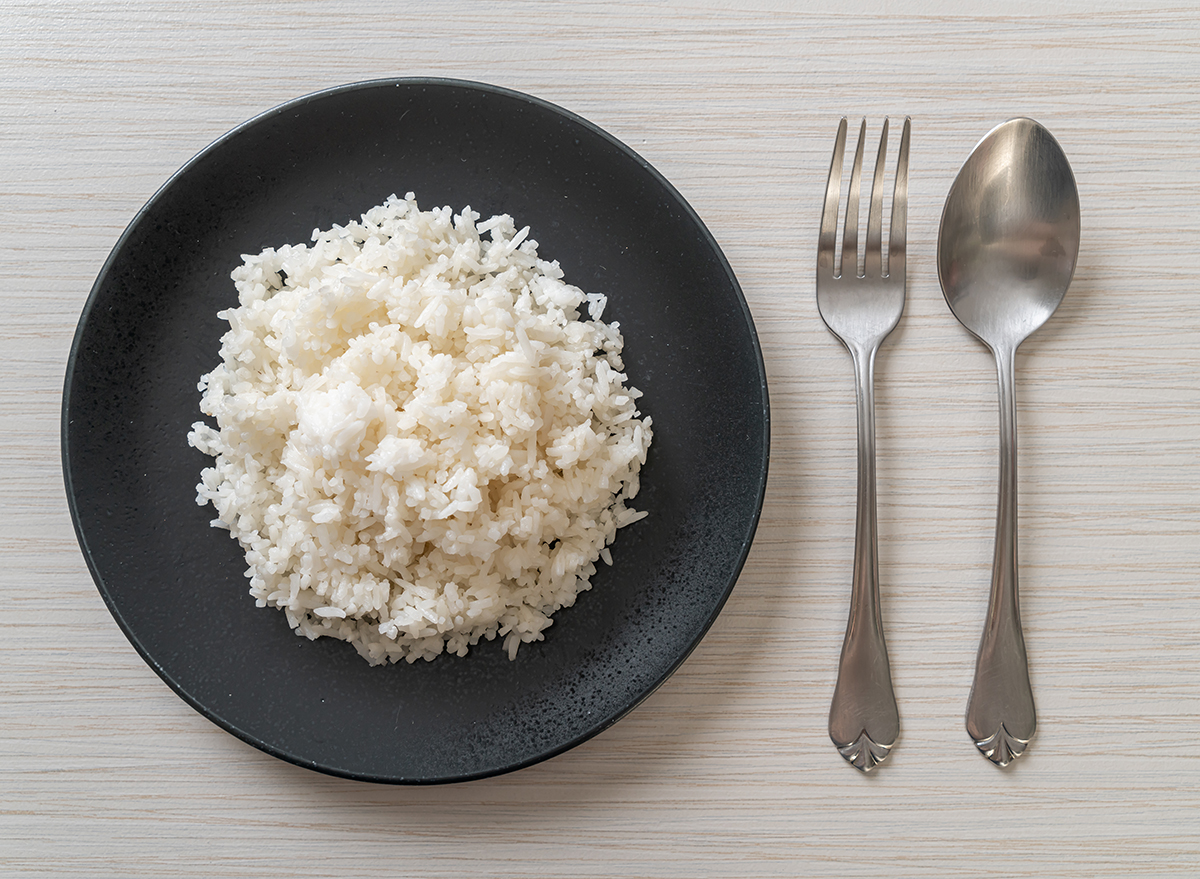Let’s know the ‘7 Surprising And Unknown Side Effects of Eating White Rice’ There is a reason why rice is one of the grains that is consumed the most all over the world. It may be altered to go well with a variety of flavor profiles and foods thanks to its extreme adaptability.
Additionally, there are numerous varieties to pick from—more than 120,000, to be precise!
According to Food & Wine, rice accounts for a startling one-fifth of all calories consumed worldwide. But how nutritious is white rice?
One of the most widely consumed varieties is white rice, also referred to as enhanced rice. Rice that has been refined, or milled, to remove the outer husk, bran layers, and germ, is known as white rice.
In spite of its widespread use, white rice frequently has a bad rap due to its processing, particularly when compared to its more nutrient-dense whole grain cousin, brown rice. White rice has maybe been referred to as a “bad carb” or a source of empty calories. Is it worthwhile to ignore it entirely, though?
To find out what eating white rice truly does to your body, we talked to Lauren Manaker, MS, RDN, LDN, CLEC, CPT, author of The First Time Mom’s Pregnancy Cookbook, The 7 Ingredient Healthy Pregnancy Cookbook, and Fueling Male Fertility. We also looked into some current research. As it turns out, there are some unexpected side effects, both positive and negative.
Check Out The 7 Surprising And Unknown Side Effects of Eating White Rice
1. You’ll Still Get Some Healthy Fiber And Other Nutrients
The fact that white rice is frequently contrasted with its less processed sibling, brown rice, is one of the reasons it has such a negative reputation. White rice can still contribute fiber and other nutrients as a component of a nutritious diet even if it has half as much fiber as brown rice.
You receive almost one gram of fiber in 100 grams of white rice. Even though it may not seem like much—especially considering that brown rice might have almost twice as much—you still get a small portion from this.
Additionally, white rice frequently includes nutrients like zinc, selenium, niacin, folate, phosphorus, and vitamin B6.
2. You May Have More Energy
It appears that your Chipotle order won’t leave you feeling sluggish and overloaded. White rice is optional, though.
White rice is a source of carbs, which are your body’s primary fuel source, according to Manaker. Additionally, many white rice kinds are enriched with B vitamins in the United States, at least, which may enhance energy levels.
All B vitamins, with the exception of folate, are involved in at least one (if not more) steps of the energy-production mechanism within the cell, according to a study that was published in the journal Nutrients. Having said that, it is imperative to consume a dose of each B vitamin in order to increase energy.
Additionally, if you consume too little of it, your body won’t be able to produce as much energy, which could be harmful to your metabolism and general health.
3. You May Have stronger Bones
It seems that eating white rice may have a significant impact on bone health.
According to Manaker, “we all know that calcium and vitamin D are crucial minerals for bone health.” Manganese, an underrated essential for bone health, is included in white rice.
4. You May Increase Your Risk of Type 2 Diabetes
More than five servings of white rice per week was linked to an elevated risk of type 2 diabetes, according to a significant cohort study including more than 39,000 men and more than 157,000 women and published in the Archives of Internal Medicine.
Eating more brown rice was linked to a potentially lower risk of type 2 diabetes, according to the same cohort study.
Also Read: Green Smoothies To Maximize Your Belly Fat Loss According To Dietitian
5. You May Ingest Arsenic
Manaker claims that arsenic is a trace element that, when ingested repeatedly and in high amounts, can have negative effects on one’s health.
Because arsenic has been discovered in rice, she explains, eating the grain can also expose you to it.
Even while white rice has less arsenic than brown rice, it’s still advisable to limit your intake and switch up your grains. Amaranth, quinoa, bulgur, and farro are among the alternatives that Consumer Reports research identifies as lower in arsenic and deserving of consideration. The same study discovered that the amount of arsenic in rice can vary depending on the region in which it was grown.
White basmati rice from California, India, and Pakistan, as well as sushi rice from the United States, may have lower arsenic contents than other varieties of rice.
6. You May Be More Prone to Developing Metabolic Syndrome
White rice consumption and the likelihood of developing metabolic syndrome may be related, although more research is required, claims Manaker.
“A group of illnesses collectively known as metabolic syndrome raise your risk of heart disease, stroke, and type 2 diabetes. The ailments include high blood pressure, abnormal cholesterol or triglyceride levels, and extra body fat around the waist “the Mayo Clinic claims.
Another study that was published in the Heart Asia journal revealed that a 30% increased risk of metabolic syndrome was linked to heavy white rice consumption. It’s not severe, yet it’s still important enough. Therefore, think about substituting another grain for white rice if you’re at risk for any of these ailments.
Also Read: 7 Secrets And Tips To Picking the Best Salmon, According To Chefs
7. The Bottom Line: White Rice Is ok In Moderation
It’s reasonable to state that you don’t need to fully exclude this carb from your diet. After looking at the potential side effects of eating white rice. A good serving of nutrients and energy can be readily and affordably obtained by eating white rice throughout the day.
However, it’s crucial to consume white rice in moderation and to include portions of complete grains throughout the week.
Also Read: Effects Of Consuming Japanese Teriyaki Sauce
Some FAQs
What Is Basmati Rice Side Effects?
White basmati rice and other refined grains raise the risk of type 2 diabetes, obesity, and metabolic syndrome. So, it’s advisable to consume them in moderation.
Effects of Eating Rice Everyday
However, everyday use of excessive amounts of white rice raises the risk of type 2 diabetes and obesity. Hence, it is important to keep a balanced diet.
What is The Right Time To Eat Rice?
Studies indicate that the optimum time to eat rice is during lunch if your objective is to lose weight. Carbohydrates included in rice will provide you instant energy and keep you running the remainder of the day.
Additionally, the calories you eat throughout the day can be burned off during your daily activities rather than being stored as fat.




